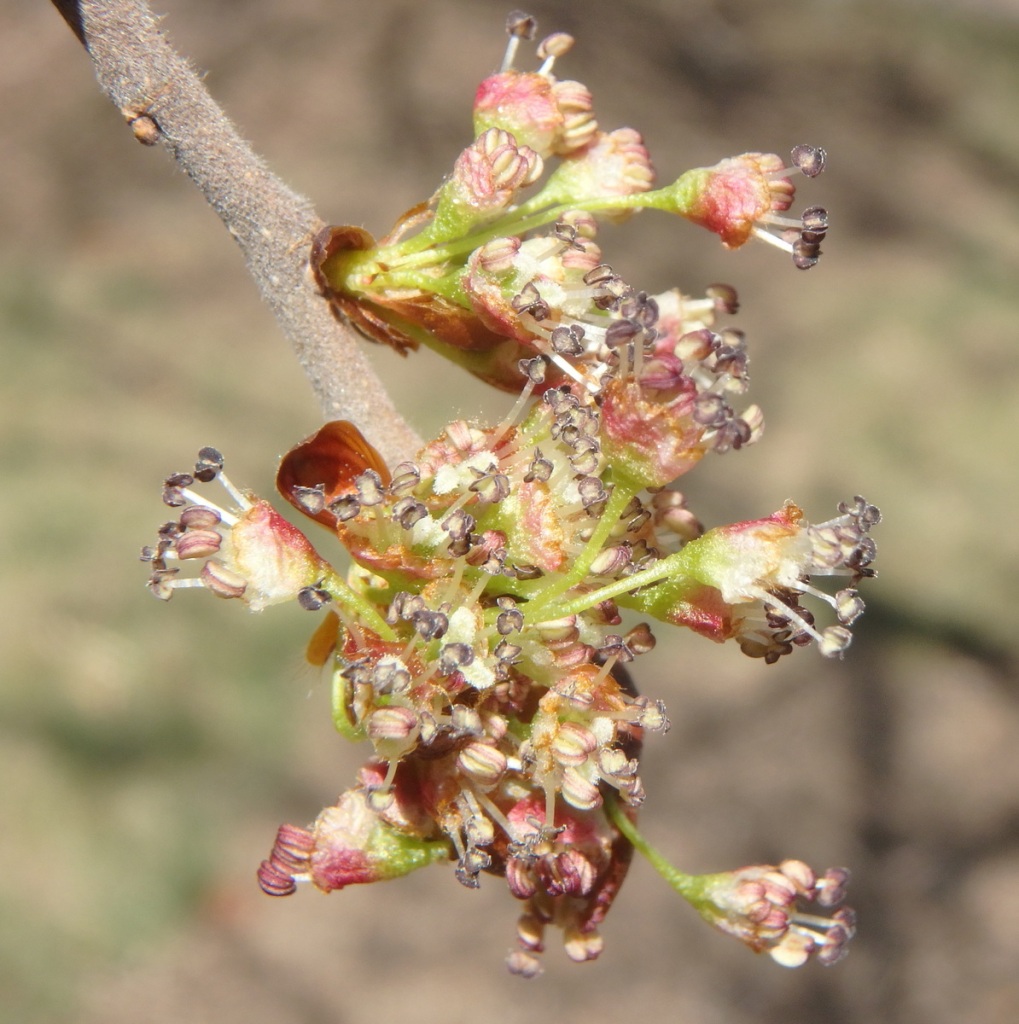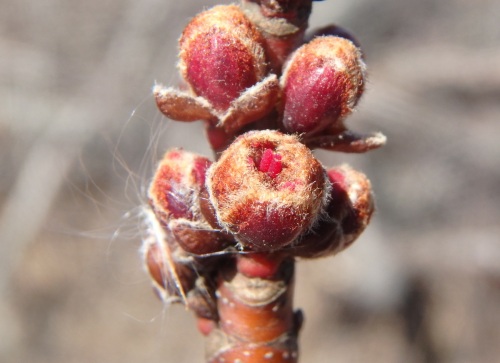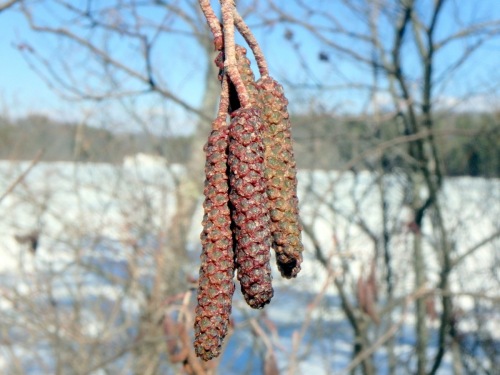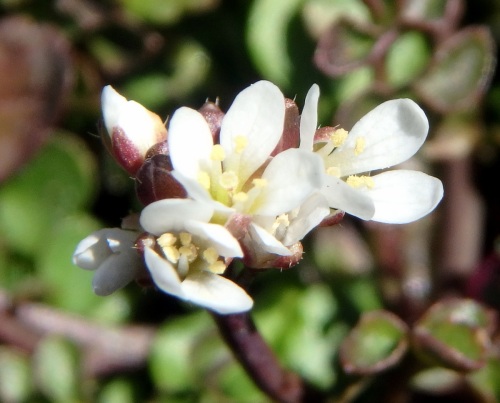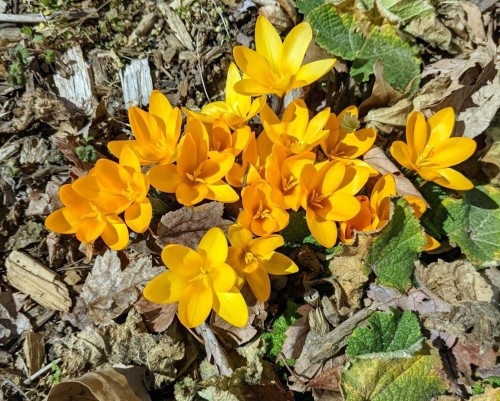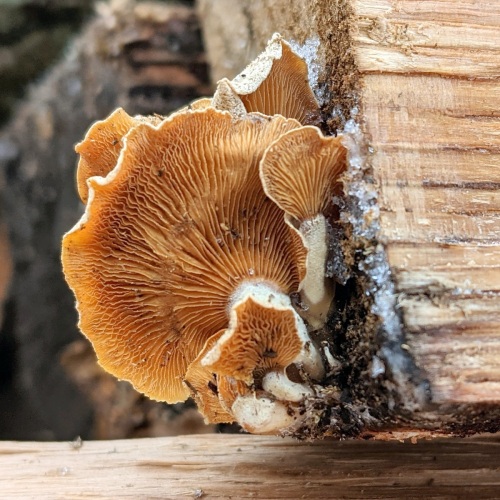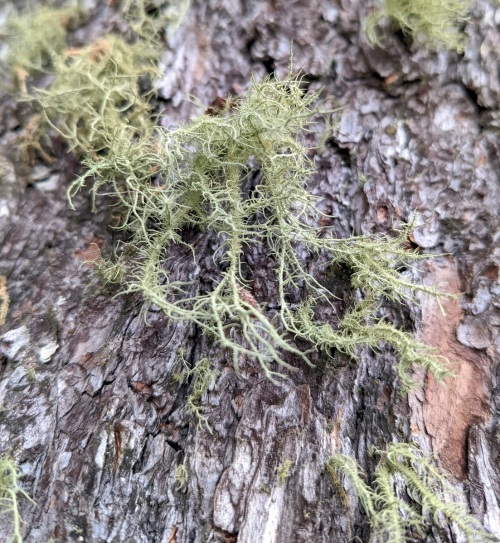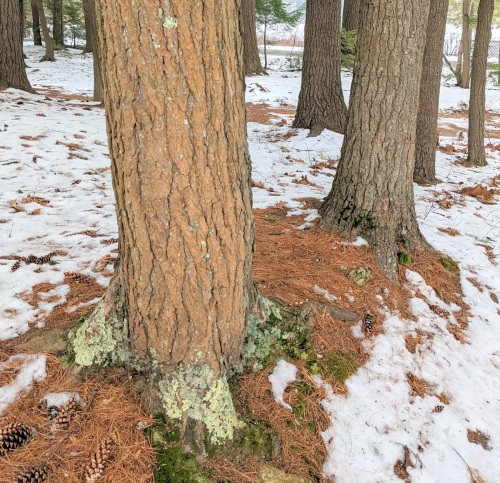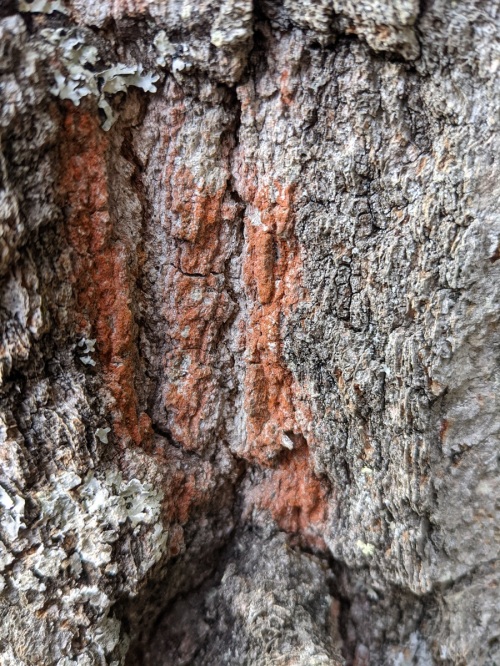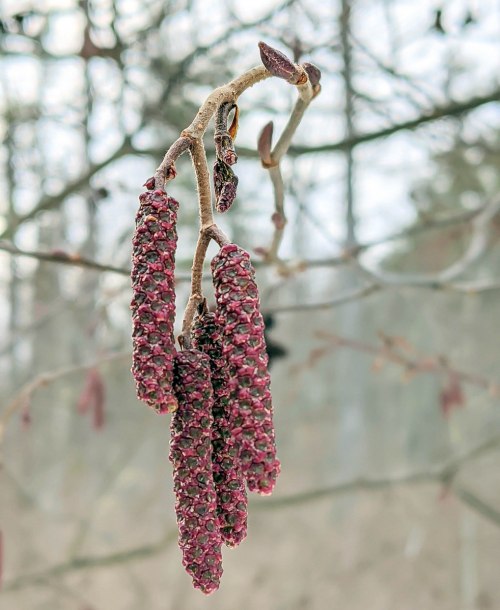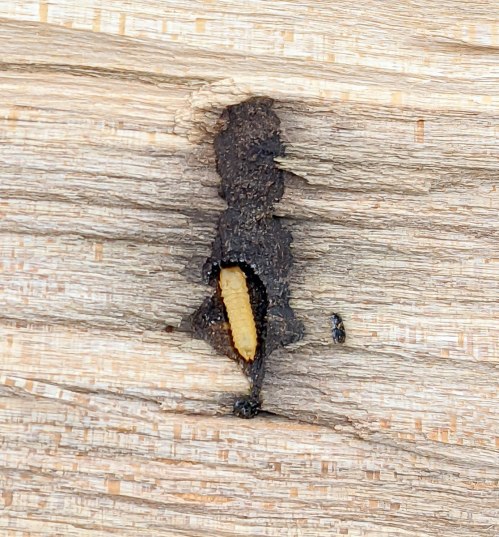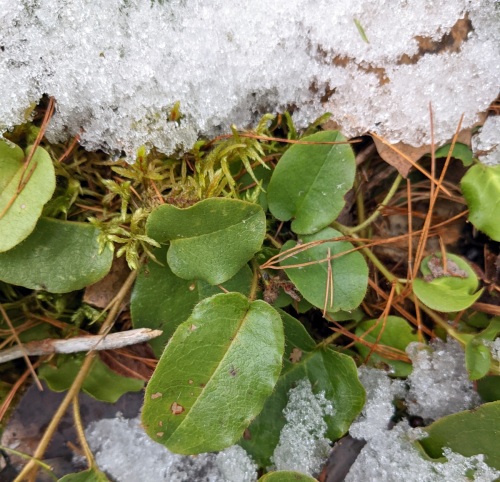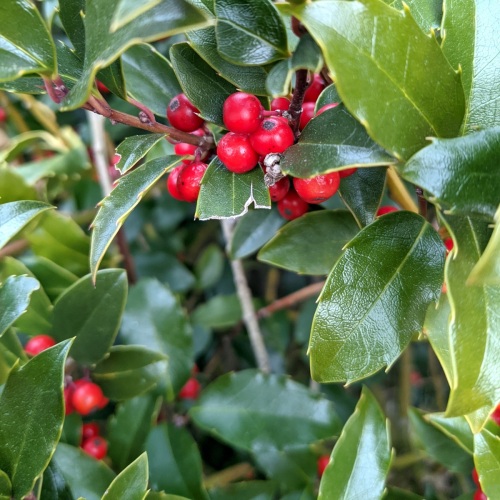
The biggest surprise this week was finding beautiful spring beauty flowers in bloom a full two weeks ahead of the earliest date I had ever seen them, which was April first. The most beautiful things in nature are almost always right there in plain sight but to find them we have to look carefully, and we have to see. Spring beauty blossoms are about the size of an aspirin and can be very hard to see when they first appear. Later on though, when the forest floor is carpeted with them it will be an unforgettable sight. They are usually the first true ephemeral wildflowers to appear in the forest in this area, so nothing says spring quite like they do.

I had to stop when I saw this dandelion blossom shining like a miniature sun. It was twice as big as all the others in the area and so very bright and beautiful more light shined out of it than on it. It was producing pollen and the bees were rejoicing. I joined them as I knelt to take its photo, so happy that spring was here once again. The Taraxacon part of the scientific name comes from the Greek taraxos, meaning disorder, and akos, meaning remedy. Dandelions have been used as both food and medicine for thousands of years and there was even a time when grass was torn up to make more room for them. A weed is an opinion, nothing more.

Signs that spring is here are everywhere now. Female American hazelnut blossoms are about as big and numerous as they ever get.

The brownish, triangular, manta ray like bud scales have opened on many of the American hazelnut catkins. Under each bud scale are three to five tiny yellowish male flowers, so there can be hundreds of flowers per catkin, wound in a spiral formation around a central stalk. Just a touch and this bush released clouds of pollen.

Female red and silver maple flowers look much like the female hazelnut flowers; just single forked threads called stigma or stigmas. Though I’ve seen many insects they don’t rely on them; they’re sticky so they can catch the pollen that the male flowers release to the wind.

Pollen production is now in full swing on male red and silver maple flowers. Some were producing pollen before they had even grown out of the bud.

Like the American hazelnut catkins, alder catkins have also started opening. Alder catkins have beautiful deep purple bud scales which contrast nicely with the tiny yellowish flowers. These flowers weren’t quite fully opened yet and weren’t releasing pollen but you can see how the buds spiral down the central stalk. Nature uses spirals almost everywhere, from spiral galaxies billions of light years across to the tiny spiral cochlea in our inner ear. That’s because the spiral, it is said, is the most efficient way for something to grow. More can be packed into a spiral than into other shapes and one of the easiest ways to see and understand this is to look at a sunflower that has gone to seed. If you look closely you see that much of nature is all about spirals.

As I poked around looking at this and that one day I had the feeling that I was being watched and I was, by a robin. This was the first one to get close to me this year. They’re very inquisitive birds and I usually have one or two land very near me each spring. One spring I was looking at maple flowers and a robin landed right beside me and began kicking up leaves, making all kinds of noise. They want to see you and they want to be seen by you.

I think this one might have been working on a nest because it didn’t seem to want to leave this spot. I didn’t want to upset it so I took a quick shot or two and let it be. This shot would have been okay one if I hadn’t cut its tail off.
Speaking of birds, in that last post I showed what I thought was a purple finch but this week I was walking through the campus of the local college and heard that wonderful song again. This time I used the Merlin bird identification app on my phone and it said “house finch.” I was quite far away from where I heard it the first time but what are the chances of both a house finch and purple finch being on the same campus? I can’t answer that but it may be that Susan’s thought that it was a house finch last week had been correct. When I was just a boy I decided I would never be able to be a “bird person” because of colorblindness, so any uncommon bird name you find on this blog should be taken with a grain of salt. I try hard not to misinform but I certainly don’t know all the bird names. Really the whole point of the story of that bird was me hoping you would want to go and hear its song online. I still hope that, because you’ll hear one of the most beautiful sounds that nature has to offer. It is like spring being presented in song.

I looked at lilac buds and noticed that the bud scales were relaxing and starting to open. I’ve been fascinated by the way buds open in spring since I was a small boy. Lilacs were the first ones I watched because they were everywhere and easy to get to.

I saw something entirely different on these lilac buds; squirrel hair blowing in the breeze.

The lilac with squirrel hair was on the grounds of the local college, and so was this squirrel. This must have been an educated squirrel because as I watched it looked both ways before crossing the road. Squirrels that live on the college campus have an easy life. Not only are there millions of acorns falling from the huge old oaks; there are also hickory, black walnut, hazelnut, butternut, and other nut bearing trees growing there. Even a blind squirrel could find nuts there.

Call it creeping Charlie or gill over the ground or ground ivy; no matter what you want to call it is one of the most common “weeds” in these parts, and it’s in full bloom. This plant grew at both may father’s and grandmother’s houses so it was one of the first plants I ever paid any real attention to. As far back as memory can take me, it’s there. It is in the mint family and is related to henbit. It has a powerful and unusual odor when it is mowed, with the kind of odor that gets in the back of your throat and stays there for a while. I think that’s what I remember most about it; that strange scent.

Speaking of henbit, here it is now. This plant’s name comes from the way chickens peck at it. Like ground ivy it is in the mint family and I’ve heard that all parts of it are edible. I like its tiny cartoonish flowers that always look surprised. Surprised that spring is here? Surprised by their own existence? I can’t say.

I haven’t seen any willow flowers yet but poplar catkins have appeared. Poplar trees are in the willow family but the catkins are usually two or three times as big as those on willows. Instead of bright yellow flowers the male poplar flowers will be a beautiful chocolate brown. The shiny brown bud scales are also bigger than willow bud scales and since those bud scales weren’t sticky I know this tree was an aspen, which like cottonwood is just another variety of poplar.

One of my favorite spring garden flowers is this beautiful crocus, called the vernal crocus. Some call them “Tommys” due to their scientific name, which is Crocus tommasinianus. I like the delicate shading inside.

I think the person who planned this bed at the local college might have miscalculated the bloom times of the crocuses because the yellow flowers always bloom two weeks before the purple, so by the time the purples show themselves the yellows are passing on. Of course that might have been the plan but in my opinion it is the contrasting colors that make the show. But that’s just another opinion.

I watched the bees fly quickly from purple to purple flower, not stopping to sample them at all. Clearly, they prefer the yellow flowers, for whatever reason. It can’t be pollen because I saw a few purple flowers that had pollen spilled on their petals.

The daffodils are promising to be beautiful this year as long as we don’t get a cold snap.

The scilla at the college are fully out in places but in other places there isn’t a sign of them. Mine aren’t showing at all yet.

More reticulated iris have come along. I love the color of these flowers but the foliage grows quite fast to twice the height of the flowers and gets in the way, especially if you’re trying to photograph them.

This beautiful reticulated iris suddenly appeared in my yard recently and there are quite a few more on the way. They came from Maryland, from my blogging friend Ginny, so once again I’ll say thanks Ginny! Your flowery gift just keeps on giving and I’m very happy to have them. Nobody I used to garden for ever grew reticulated iris.

I went to the swamp where skunk cabbages grow to see how they were doing and I took a step backward and heard a crunching sound. I knew what that meant and sure enough when I turned around I saw that I had accidentally stepped on one of the plants. Though the damage might look severe I only damaged the outer spathe, so none of the actual flowers were harmed. The flowers are the tiny white bits that spiral around the spadix, which is the thing that looks sort of like a brain. These flowers are special though, because they are the female flowers of the skunk cabbage, and you’ve never seen them before on this blog.

In all the years I’ve been doing this blog each spring I’ve shown you skunk cabbage flowers, and in all those years not once did I find female flowers. Every spring they’ve been male flowers like those seen in this photo. So what are the odds of seeing female flowers only once in 13 years? Quite high, apparently. The odd thing is, not once did I tell myself that I really should show you the female flowers. That I think, is because I’m always so relieved to have gotten a photo at all. To get photos of skunk cabbage flowers you are in a swamp, usually standing or kneeling in mud and/or water, trying to train your lens through an opening that might be two inches wide if you’re lucky. It’s a bit like shining a flashlight into a cave and It gets more challenging each year, so I’m usually happy to leave the swamp.

With the weekly rains we’ve been having the rivers are running quite high, so I thought I’d go and see if I could catch a wave. Here it is.
I hope you are having good weather and are seeing plenty of signs of spring, wherever you are.
If you listen to the birds, every day will have a song in it. ~Kyo Maclear
Thanks for coming by.




















































































































